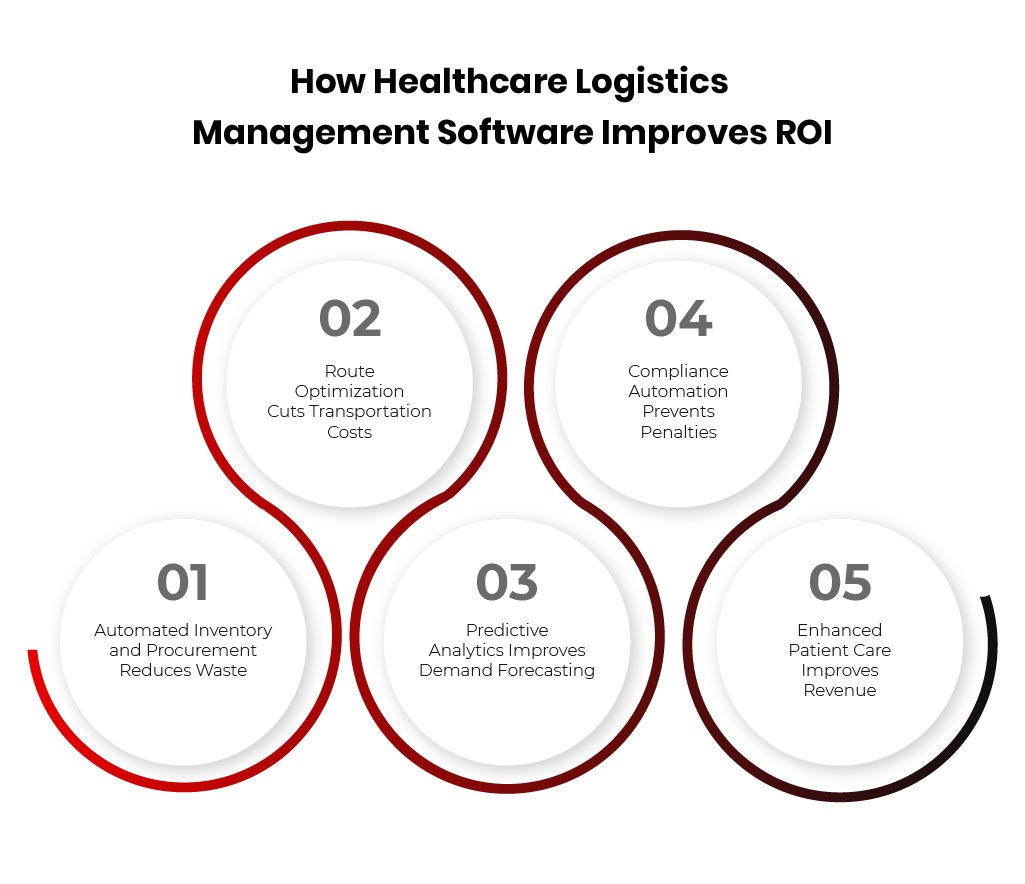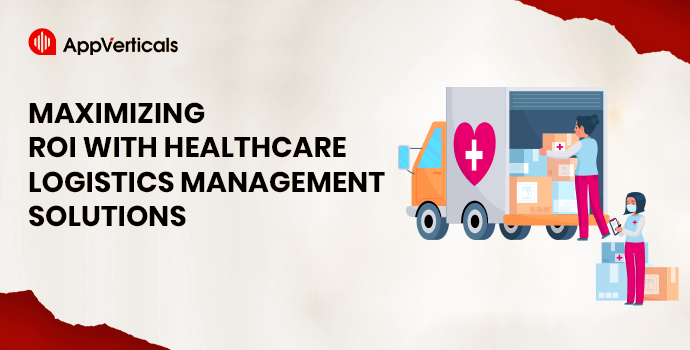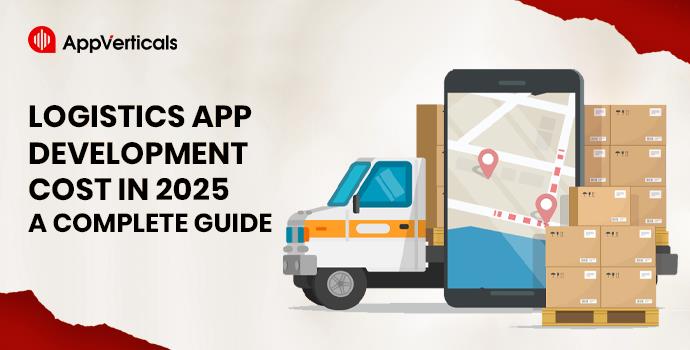Healthcare providers are under financial pressure more than ever. Supply chains are costing hospitals almost 30-40% of the total operating budget, suggests McKinsey. There is certainly a need to control the logistics expenses for the healthcare industry. At the same time, providers cannot compromise on the timely delivery of surgical tools, medicines, equipment and vaccines – because even the slightest delay can have a negative impact on patient outcomes.
This is where the concept of healthcare logistics management intervenes. It can serve as not only an operational function but strategic investment. By streamlining the flow of resources across procurement, warehouse, distribution and last-mile delivery, healthcare organizations can cut-down significant costs while also enhancing the delivery of care.
The challenge is – many hospitals, distributors and pharmacies depend on fragmented systems and manual processes even in 2025. This leads to drug shortages, inventory waste, inefficiencies and compliance risk that can directly drain your ROI. With the rising cost of medical supplies and pharmaceuticals, ignoring these inefficiencies is no longer an option if you want to keep your business profitable and maximize ROI.
Investing in healthcare logistics management solutions can help you gain real-time visibility, optimize supply chains, and future-proof operations against uncertainty. More than that, it can help transform logistics from a cost center into a value driver, contributing directly to the financial sustainability and patient satisfaction.
Want to Optimize Healthcare Logistics Costs?
Discover how hospitals reduce logistics expenses with smarter, data-driven supply chain systems.
To help you get through the depth, this blog explores in detail about the ROI of healthcare logistics management, the challenges it solves, and the latest trends shaping the future of healthcare logistics. It will also highlight why forward-thinking healthcare leaders are investing in custom logistics management software to unlock measurable returns in 2025 and much more.
What Is Healthcare Logistics Management?
Healthcare logistics management is the process of managing the flow of medical goods and resources within the healthcare supply chain to cut-down waste, reduce costs, and ensure timely availability alongside improving patient outcomes.
Unlike the generic supply chain operations, logistics management in healthcare is often complex. Pharmaceuticals usually require temperature-controlled storage (or cold chain logistics). Hospitals require keeping track of the high-value equipment in real-time to avoid any shortages or delays in surgery. Pharmacies need very precise demand forecasting to make sure the stock levels are always balanced and no medications are expiring.
A well-designed, strong healthcare logistics management process also integrates regulatory compliance. Every step – from the basic manufacturing of drugs until their delivery at hospitals or to the remote patients’ homes, the process must meet all the HIPPA, FDA, and regional standards. Any failure or error in this chain can not only increase costs but also compromise patient safety.
Modern healthcare logistics and supply chain management use the latest technology such as IoT-enabled tracking, AI forecasting, and cloud-based inventory systems. These tools help shift logistics from a reactive function to a proactive strategy that supports improved decision-making and creates measurable ROI.
By treating logistics as a strategic resource, healthcare organizations can turn supply chains into competitive advantages – improving transparency, reducing operational costs, and strengthening patient trust.
Current Challenges in Logistics and Supply Chain Management in Healthcare
Despite its significance, logistics and supply chain management in healthcare remains one of the most under-optimized areas for many providers. A mismanaged, fragmented supply chain not only increases costs – it can directly impact organizational efficiency and patient safety at the same time.
The biggest challenges hurting ROI for healthcare organizations include:
Inventory Waste and Shortages
Hospitals often overstock medicines to avoid shortages. But this leads to billions in annual waste because of expiration, etc. The U.S. healthcare system wastes nearly $765 billion annually, a major chunk of which is tied to expired inefficiencies and expired inventory, reports JAMA (Journal of American Medical Association), 2019. On the contrary, understocking critical drugs and equipment delays treatments and surgeries, negatively impacting revenue and patient trust.
Cold Chain Complexities for Vaccines and Biologics
Pharmaceutical logistics is not about simple storage anymore. Vaccines and biologics require precise temperature control during transportation. Even the slightest of lapse in temperatures and timings can render entire shipments unusable, risking compliance violations and costing millions. An estimated 25% of vaccines are wasted every year due to the cold chain failures across the globe, reports WHO (World Health Organization).
Rising Compliance and Regulatory Costs
Healthcare is one of the most regulated industries. And ensuring compliance with FDA, HIPPA, and regional laws of drug safety require thorough documentation across the logistics chain. Manual supply chain processes lead to errors, penalties and product recalls – eventually cutting down the profitability.
Limited Visibility in Remote Patient Care
With telehealth and home-based care expanding, providers need reliable delivery of equipment and medicines to the remote patients. Without transparent logistics systems and real-time tracking, lost shipments and delays can negatively impact patient outcomes and legal liabilities.
High Transportation and Distribution Costs
Fragmented routes, lack of route optimization and fuel costs continue to inflate the expenses. In fact, logistics accounts for 25-30% of the total supply chain cost in the healthcare industry, suggests Deloitte. Without optimal digital optimization, providers end up paying a lot more effective last-mile deliveries than required.
The most significant ROI drains in healthcare supply chains are cold chain failures, waste inventory, compliance penalties and in-efficient last-mile delivery. These challenges highlight why adapting to the modern healthcare logistics management solutions is the need of time in order to maintain financial sustainability and patient safety.
How Healthcare Logistics Management Software Improves ROI
The true value of a healthcare logistics management software lies in its ability to turn logistics from a cost-heavy function into a profit driver. By automating routine tasks, digitizing workflows, and offering real-time visibility, these solutions can unlock measurable financial returns. Let’s take a look at how logistics management solutions are achieving that below:

Automated Inventory and Procurement Reduces Waste
While traditional systems rely on guesswork and manual checks, a software-driven approach to keep track of inventory in real-time and manages procurement via automation. This helps ensure the stock levels are aligned with latest demand, reducing waste and cutting-down the cost significantly.
ROI Impact – hospitals can cut-down their expenses by 10-20% annually with digital supply chain systems, says Gartner.
Route Optimization Cuts Transportation Costs
Delivery inefficiencies are often the costliest part in the healthcare supply chain. Modern logistics management tools leverage AI-driven route optimization to cut-down fuel costs, reduce delays, and maximize delivery reliability.
ROI Impact: Several healthcare providers report they are saving 15-25% on distribution costs with the successful implementation of route optimization software.
Predictive Analytics Improves Demand Forecasting
Demand forecasting enabled with AI makes sure the right resources are available at the right time. It helps prevent both stockouts and overstocking by analyzing seasonal trends, historical data, and patient records.
ROI Impact: accurate forecasting can help reduce stockouts by 30% while cutting-down the excess inventory costs.
Compliance Automation Prevents Penalties
Errors in compliance can not only risk legal penalties but negatively impact your brand’s reputation as well. Modern logistics management solutions embed documentation, audit trails, and regulatory checkpoints throughout the healthcare supply chains to ensure FDA, HIPPA, and regional compliance.
ROI Impact: healthcare providers who’ve adapted modern logistics management solutions are saving millions minimizing risk exposure and saving millions in potential recalls and fines.
Enhanced Patient Care Improves Revenue
Efficient healthcare logistics and supply chain management helps ensure patients receive devices, medications and treatments on time. Fewer delays means higher patient satisfaction, lesser readmissions, and a stronger long-term revenue. In healthcare, operational efficiency directly translates to improved patient trust which can support sustainable ROI.
Adapting healthcare logistics management software can improve ROI, reduce waste, cut-down distribution costs and enable enhanced demand forecasting, automating compliance, and improving patient care delivery.
Boost Your ROI with Custom Logistics Solution
Partner with our experts and create the best healthcare logistics management solution that can improve both ROI and patient outcomes.
Healthcare leaders often have this question in mind: ‘What’s the real return on investing in logistics management software?’ The quick answer lies in measurable outcomes. By streamlining logistics via automation, all hospitals, pharmacies and distributors consistently report increased efficiency, lower costs, and enhanced patient outcomes.
Let’s take a look at how ROI plays out in practice:
Cost Savings in Inventory Management
Hospitals that are using healthcare logistics management systems are typically observing around 10-20% reduction in inventory costs. Demand forecasting and automated procurement helps eliminate unnecessary stockpiling while also preventing any shortages.
Lower Transportation and Distribution Costs
AI-powered route optimization significantly reduces delivery times and fuel expenses. Case studies from around the globe show how distribution costs drop by 10-20%, especially in large hospital networks and pharmaceutical supply chains.
Compliance Cost Reductions
Automated audit trails and documentation helps reduce the risk of penalties or fines that are very likely to happen as an outcome of regulatory non-compliance. Several providers report that they have been able to save millions every year by avoiding legal issues and product recalls.
Revenue Growth through Improved Patient Care
Efficient logistics means fewer delays in device and medicine deliveries, which plays a direct role in improving patient satisfaction. A Deloitte study found that hospitals that have streamlined supply chains were able to achieve twice the patient satisfaction scores than those who don’t, meaning higher revenue and stronger brand loyalty.
Before vs. After: The ROI of Healthcare Logistics Management
Here’s a quicker look at how your ROI would look before and after the implementation of a modern healthcare logistics management solution:
| Metric | Before Software Adoption | After Software Adoption |
| Inventory Costs | 15-20% higher because of overstocking and waste | 10-20% lower via real-time tracking |
| Stockouts | Frequent shortages leading to delayed treatments | Decreased by 30% using predictive analytics |
| Transportation Costs | Inefficient routes costing almost 25-30% of the total supply chains budget | 15-20% excessive costs saved via route optimization |
| Compliance Risks | Manual tracking with frequent errors | Automated compliance with fewer calls/fines |
| Patient Satisfaction | Delays in the availability of equipment and medicines | Improved trust and care outcomes translating into revenue growth |
Investing in healthcare logistics management software can save up to 25% in distribution, 20% in inventory costs, 30% in stockouts, and millions in compliance costs – all while ensuring both your ROI and patient satisfaction remains high.
What Are the Latest Trends in Healthcare Logistics Management 2025?
As healthcare systems continue to expand and patient expectations rise, organizations are adopting smarter technologies to modernize their supply chains. If you’re wondering what are the trends in healthcare logistics management today, 2025 is defined by innovations that bring visibility, speed, and accountability across the network. Here are the latest trends in healthcare logistics 2025 that are reshaping the industry:
1. AI & Predictive Analytics
Artificial Intelligence is transforming logistics into a proactive function. Hospitals and pharmaceutical distributors are using AI-driven forecasting models to predict demand for medicines, PPE, and equipment. Instead of reacting to shortages, predictive analytics ensures timely procurement, prevents overstocking, and reduces waste—critical in managing temperature-sensitive drugs and vaccines.
2. Blockchain for Transparent Transactions
Traceability and trust are vital in healthcare supply chains. Blockchain ensures tamper-proof records of every step, from manufacturing to last-mile delivery. This helps eliminate counterfeit drugs, maintain compliance with strict regulations, and increase accountability across vendors, pharmacies, and hospitals.
3. IoT & RFID for Real-Time Asset Tracking
Connected devices and RFID sensors are enabling real-time visibility into medical supplies, equipment, and cold-chain transport. Logistics managers can track shipment conditions (like temperature or humidity) instantly and take corrective action before damage occurs. This reduces losses while ensuring medicines reach patients in safe condition.
4. Remote Patient Delivery Networks
With the rise of telemedicine and homecare, logistics is no longer limited to hospitals and clinics. Providers are building delivery networks that directly reach patients at home, supplying them with medicines, diagnostic kits, or medical devices. This trend makes healthcare more patient-centric and addresses the growing demand for care beyond traditional facilities.
5. Cloud-Based Integrations with EHRs
Modern logistics solutions are integrating with Electronic Health Records (EHRs) to create seamless workflows. For example, when a doctor prescribes a device or medication, logistics systems can automatically trigger supply requests and delivery scheduling. Cloud-based platforms make this integration scalable, secure, and accessible for multi-location healthcare organizations.
Together, these latest trends in healthcare logistics 2025 show a shift toward digitization, transparency, and patient-first delivery models. Organizations that embrace them not only cut costs but also ensure better patient outcomes—a win-win for both operational efficiency and healthcare quality.
Why Transparency is Crucial in Healthcare Logistics
The importance of transparent logistics management in healthcare cannot be overstated. In a sector where every shipment could mean life-saving medicines or critical devices, visibility across the supply chain directly impacts patient outcomes. Transparent systems reduce fraud, minimize shortages, and build trust among providers, suppliers, and patients alike.
Impact on Patient Outcomes
- Every shipment in healthcare logistics may contain life-saving medicines or critical medical devices.
- Supply chain visibility ensures these reach the right place at the right time.
- Transparent systems reduce fraud, prevent shortages, and build trust among providers, suppliers, and patients.
Risks of Poor Visibility
- Delayed deliveries can disrupt treatment schedules.
- Inventory mismanagement may cause stockouts of essential drugs or equipment.
- Lack of oversight can open doors to counterfeit products entering the system.
Compliance and Accountability
- Healthcare organizations must meet strict standards like HIPAA, FDA, and EU MDR.
- Transparent platforms provide auditable records, simplifying compliance.
- Real-time tracking strengthens accountability and reduces the risk of regulatory penalties.
Patient-First Benefits
- Timely alerts for shipment delays help mitigate care disruptions.
- Route optimization and predictive replenishment keep critical resources available.
- Transparent systems boost patient confidence, especially in remote care models.
Beyond Best Practice—A Necessity
- Transparency ensures both operational efficiency and patient safety.
- It future-proofs healthcare logistics, enabling providers to deliver consistent, reliable, and patient-centric care.
Why Investing in Logistics Management Makes Financial Sense in 2025
For healthcare providers, investing in logistics management is no longer just about upgrading systems—it’s about making a strategic financial decision. In 2025, with rising costs, stricter compliance demands, and a growing emphasis on patient-centric care, organizations that fail to modernize risk higher expenses and slower growth.
Efficiency That Pays for Itself
Inefficient supply chains drain resources. Studies suggest that digital logistics optimization can cut up to 30% of healthcare supply chain costs (Deloitte). By adopting advanced logistics software, healthcare providers minimize stockouts, reduce over-ordering, and streamline last-mile delivery. These efficiencies don’t just lower operational costs—they deliver measurable ROI within months.
Safeguarding Revenue and Compliance
In healthcare, compliance is directly tied to revenue. Mishandled shipments, missing documentation, or temperature control failures can lead to heavy fines, lawsuits, or wasted inventory. Modern logistics management systems embed compliance into every step, reducing risks while protecting revenue and reputation.
Smarter Decisions through Data
Today’s logistics solutions are not only about tracking—they’re about predicting. AI-driven demand forecasting, automated route optimization, and predictive maintenance empower decision-makers to act before problems escalate. This translates into cost savings, fewer disruptions, and more reliable patient care delivery.
Preparing for the Future of Healthcare
As the healthcare supply chain becomes more global and patient-focused, scalability is critical. Legacy systems can’t keep up with demands like telehealth-driven deliveries or real-time inventory visibility. Investing in logistics management in 2025 ensures future readiness, giving organizations the flexibility to grow and adapt without costly overhauls later.
Choosing logistics management isn’t just about technology—it’s a financial and strategic move. It reduces waste, ensures compliance, and enables smarter, future-proof decisions. For healthcare providers in 2025, the right logistics solution is one of the few investments that consistently pays for itself.
Facing Issues with Timely Deliveries and Inventory Management?
Don’t let these issues impact patient care—build custom solutions that cater healthcare problems with perfection.
Healthcare Logistics as a Strategic ROI Driver
Inefficiencies in healthcare logistics management are too costly to ignore. From wasted supplies to delayed deliveries, the financial and patient safety risks can significantly erode margins. That’s why logistics management in healthcare is shifting from manual processes to software-driven, data-powered strategies.
By embracing custom-built healthcare logistics solutions, organizations can optimize supply chains, improve compliance, and maximize ROI. Predictive analytics, AI, and IoT aren’t just trends—they’re becoming essential tools for sustaining patient trust and operational efficiency.
Healthcare leaders ready to maximize ROI should explore custom healthcare logistics management solutions with an experienced mobile app development company like AppVerticals. The right software doesn’t just streamline logistics—it transforms it into a competitive advantage for the future of healthcare.
Ready to Future-Proof Your Healthcare Supply Chain?
Partner with our experts to build tailored healthcare logistics systems that save time and resources.









